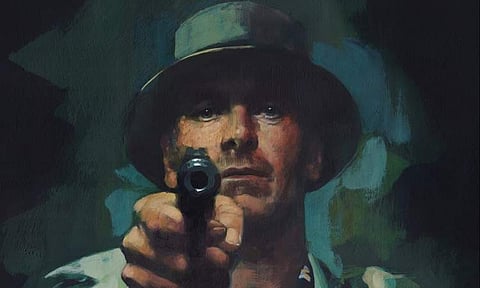The Killer Review: A focused actioner with a pronounced social commentary
Rating:(4 / 5)
In The Killer, David Fincher reels you in with subtle cinematic techniques. The film opens on a cold and methodical assassin who patiently waits alone in an unoccupied office building. He waits for days to snipe his target in the building across the street. With a voice over narration that drowns you in his thoughts, you get increasingly engrossed in every mundane step of his process, most of which is him patiently waiting for his target to reach the crosshairs of his sniper rifle at just the right angle. However, if you look at the sequence macroscopically, his routine has no nail biting stakes, anxiety inducing build up of events, or promise of a chilling action. And yet, it grips you. So why does it work? It works because Fincher pulls your attention not at a conscious level but through subconscious elements. This subconscious immersion is achieved through a combination of cinematography, sound design, and dialogues.
Following a botched assassination attempt, the killer must track down and eliminate his employers after finding out that they tried to harm his family in order to tie loose ends. When the premise is spelled out in such a fashion, The Killer sounds like one of the hundreds of cheesy 80s Hollywood action films. However, The Killer could be read in multiple different ways. It is a character study of a driven man with a skewed moral compass and who perceives empathy as a form of weakness. It is about how those at the very top of the societal order exploit those who are willing to do whatever it takes to reach their level. And ofcourse, the film could also be imbibed as an action packed revenge drama.
With how closely we are made to follow every single move, hang on to every single thought, and capture every change in mood of the character, Michael Fassbender’s stoic performance becomes intense and menacing real quick when it needs to. A hand-to-hand combat sequence towards the middle of the film is expertly created not just on account of a brilliant fight choreography, it is also a perfect symphony of sound, cinematography, and editing. Short bursts of editing and sound design, positioned to land at exactly the moment of the punch, makes it feel that much harder.
“It’s amazing how physically exhausting it can be to do nothing,” says the character, while patiently waiting to snipe his target. Fincher goes to great lengths, throughout the film, to show how patient the assassin is while stalking his prey. While Fincher has clear reasons to construct the film that way, the repetitive sequences (like the montage of airport check-ins) could be exhausting at times. The screenplay is not made of complicated layers, as the story is itself pretty thin. However, the themes and subtexts are incredibly layered with commentary on the extreme wealth inequality and the all-consuming, all-pervasive nature of capitalism. The final scene where the nameless assassin reflects upon the heavily skewed societal order and realises that maybe he is ‘not one of the very few’, is the moment you understand that The Killer is about a gun that tries really hard to be the hand that holds it.

